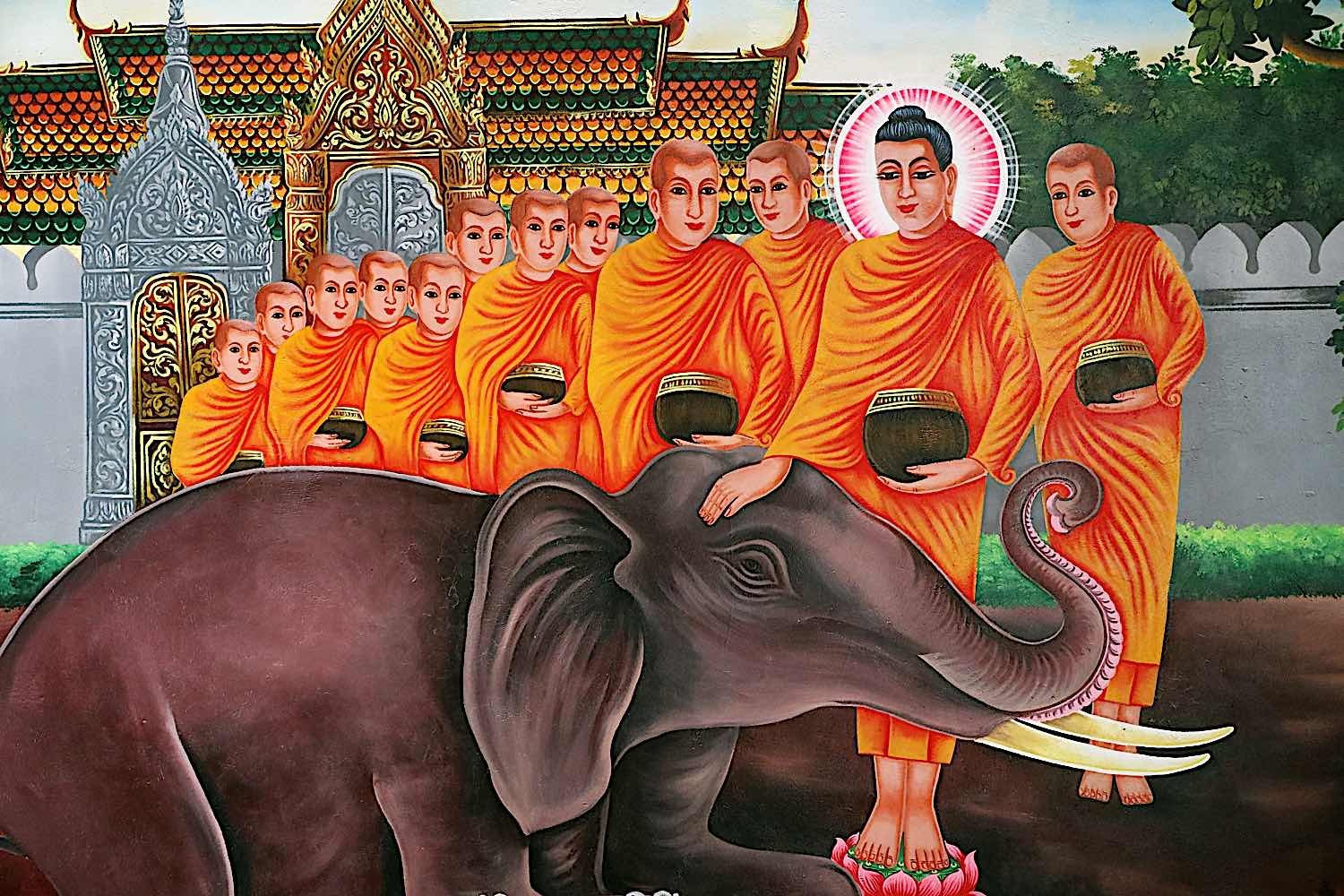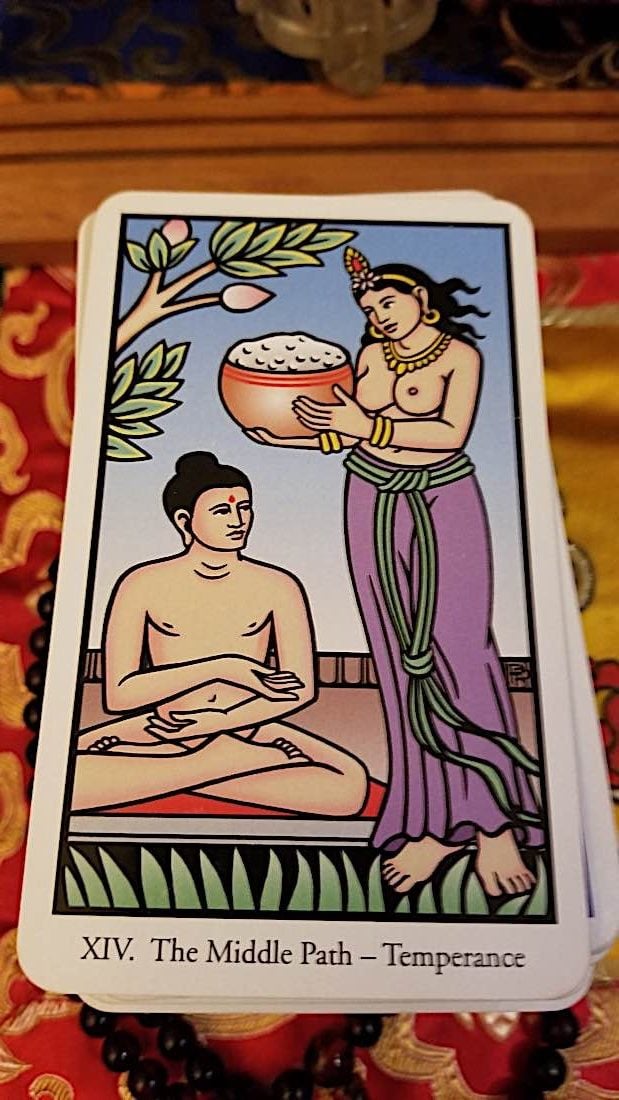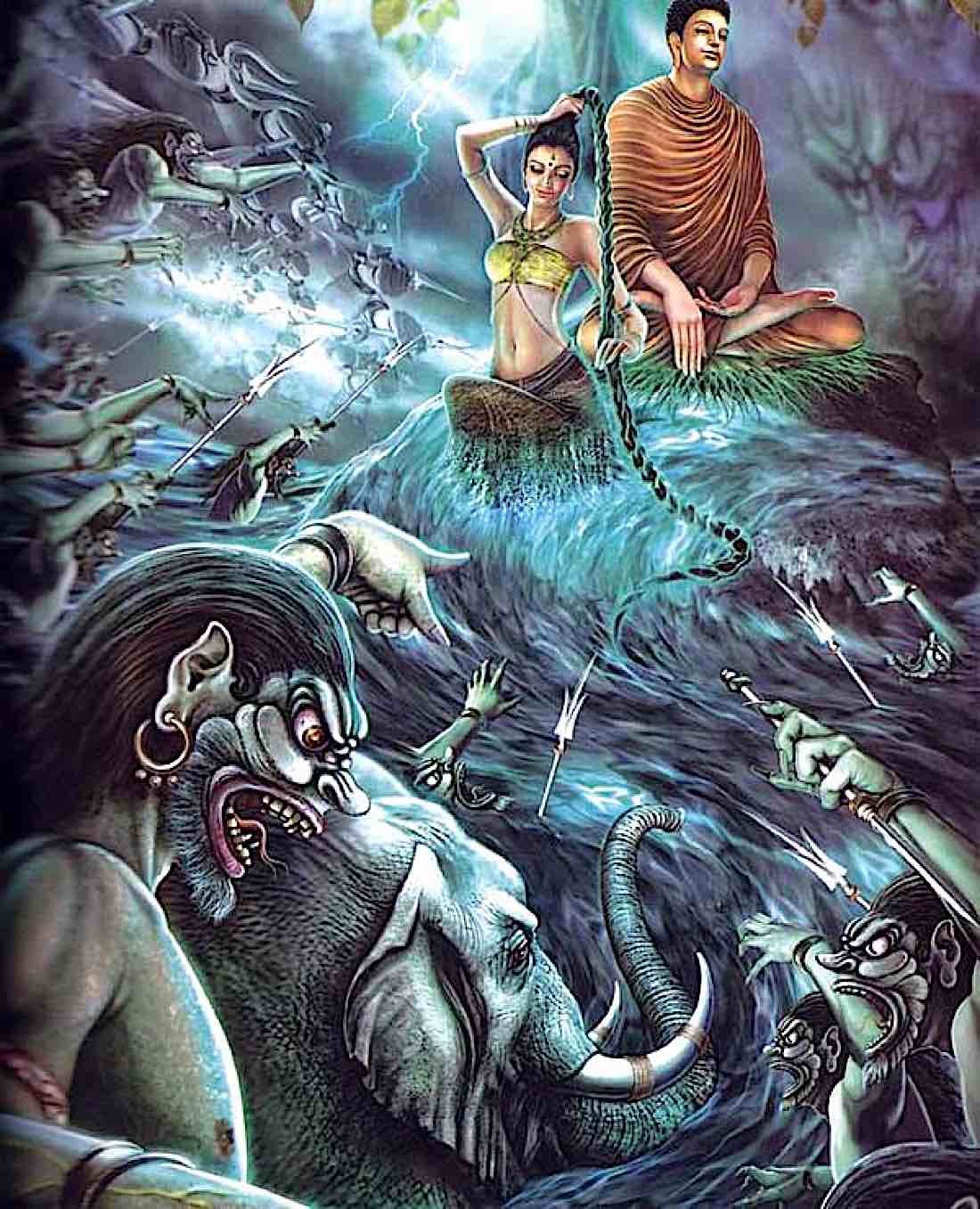Historical Gautama Shakyamuni Buddha life; what do archaeologists, scholars and scientists agree are the validated, authentic events?
There can be no question that Buddha was a living, historical person, born in the sixth century B.C. in what is now Nepal — whose profound teachings influenced the thinking of philosophers for the last 2600 years. Buddha’s life and teachings are not a matter of faith. His practical, method-based teachings changed much of Asia, and ultimately permeated societies around the world.

Gautama Buddha is accepted by most scholars as a real person, even if there are obviously mythical overlays for the purposes of skillful “teaching.” The most exciting recent evidence was archeological — a likely date for Buddha’s birth.
This new evidence, together with previous substantial evidence, begs the question — which stories of Buddha’s life are verifiably factual, and which stories may be embellished for teaching-purposes? Many of the Sutra stories have been verified to various extents through correlation to historical events of the time. Some of the disciples of the Buddha have been verified credibly.
The National Geographic discovery (video):
November 25, 2013— At one of Buddhism’s most revered pilgrimage sites, a National Geographic archaeologist’s team has uncovered evidence that the Buddha lived in the sixth century B.C., much earlier than some scholars had believed. The excavation at Lumbini, Nepal, long identified as the birthplace of the Buddha, revealed a previously unknown timber shrine once stood there, it’s walls mirroring more recent brick temples.

Birth of Buddha — 6th Century BCE
In 2013, National Geographic reported on archaeologists in Nepal who discovered verifiable evidence of a structure at the birthplace of the Buddha — dating to the sixth century B.C. As quoted from the National Geographic Society (Nov 25, 2013):
“Pioneering excavations within the sacred Maya Devi Temple at Lumbini, Nepal, a UNESCO World Heritage site long identified as the birthplace of the Buddha, uncovered the remains of a previously unknown sixth-century B.C. timber structure under a series of brick temples. Laid out on the same design as those above it, the timber structure contains an open space in the center that links to the nativity story of the Buddha himself…”
Their peer-reviewed findings are reported in the December 2013 issue of the international journal Antiquity. The research is partly supported by the National Geographic Society.
“UNESCO is very proud to be associated with this important discovery at one of the most holy places for one of the world’s oldest religions,” said UNESCO Director-General Irina Bokova, who urged “more archaeological research, intensified conservation work and strengthened site management” to ensure Lumbini’s protection.

Buddha’s wonderful birth is accepted as fact. Although elements of stories can be taken as literal truth (that Buddha was born), most modern Buddhists might understand that the sutra story is possibly embellished — with enriching symbolism — such as Buddha walking immediately after birth and lotus blossoms springing from the ground where he stepped. Is this a false story? No, it’s a spiritual truth wrapped in a story-telling metaphor (at worst) — and there’s absolutely no harm in taking it as literal truth.
Buddha’ Enlightenment
How verifiable is the most famous story of Buddha’s amazing life — his Enlightenment beneath the Bodhi tree? According to Biography.com:
“According to the most widely known story of his life, after experimenting with different teachings for years, and finding none of them acceptable, Siddhartha Gautama spent a fateful night in deep meditation beneath a tree. During his meditation, all of the answers he had been seeking became clear, and he achieved full awareness, thereby becoming Buddha.”
The majority of scholars accept this story as “nonmythical” — that Buddha did contemplate in this way. Clearly, he did become one of the greatest and most influential teachers, based on the realizations he attained in his meditations.

Verifiable Facts

Scholars agree on certain verifiable facts — verified not only by archaelogical evidence, but hisotorical documentations. The events of his life that are widely accepted as verifiableare:
- Buddha was born (currently dated to 6th century B.C) in Lumbini, present-day Nepal.
- Buddha taught Four Noble Truths and the Eightfold Path.
- Buddha’s “Middle Way” path not only grew into one of the most widely practiced spiritual paths — his teachings influenced other teachers and paths.
- Buddha initially taught five ascetics — with whom he had practiced asceticism.
- Buddha became a monk. He taught both monks and lay followers.
- Buddha admitted women to the Sangha of practitioners — revolutionary for his time.
- Buddha taught Buddha Dharma for many decades — to numerous disciples who later recorded his teachings (Suttas or Sutras.)
- Buddha’s Dharma influenced culture all over India, and later many parts of Asia.
- Buddha died in India around the age of 80. In most accounts he died from eating spoiled food.
- Buddha’s name was Siddhartha Gautama

What about the “nonverified facts”
Buddhists accept the word of the Buddha as profound and uncorrupted. Does that mean that sutras containing mystical and magical stories are considered “conventional provable reality?” That is for individuals to decide. Buddha famously taught with skillfull means. Jakata tales, which are tales of his “past lives” can be viewed as literal or metaphor. In Buddha Dharma, where Conventional Reality and Ultimate Reality overlap and interact, there is no difference. Does it matter if he preached on Vulture mountain before millions of Devas (gods) and arhats? Not really. Language and metaphor and symbolism are all part of skillful means.

Authenticity of sutras
Does that mean we should doubt the sutras? Buddha himself taught his followers to doubt everything, question everything, challenge everything.

The point is not to get trapped in arguments of “this was verifiable” and “this was a myth with a lesson.” The point is to embrace the teachings for its practical benefits in our lives today.
Timeline of Buddha’s Life
Although earlier experts placed Buddha’s life at 490 B.C. to 410 B.C., the latest archeological evidence places Buddha’s Birth at 563 B.C. and his Paranirvana at 483 B.C. Dating relates to birth relics recently found, and his Paranirvana dates can be easily reinforced by his funeral relics scattered throughout India and Asia.

563 B.C. Conception to the Sakyas
Sakyamuni (Shakyamuni) Gautama Buddha’s conception — in much of Asia, conception is the celebratory date, rather than the actual date of birth. [2] Famously, Queen Maha Maya, Buddha’s mother, had a conception dream of a white elephant with six tusks descending from heaven to enter her womb. His title Sakyamuni (pronounced Shakyamuni) literally means ‘sage’ of the Sakyans — where Sakya was his father’s kingdom or oligarchic republic (located in modern-day Nepal). Muni literally means “sage.” Śākyamuni (शाक्यमुनि) is title of Buddha fist cited in Mahāprajñāpāramitāśāstra (chapter VI).

563 B.C. Siddartha’s Birth in Lumbini Nepal
Buddha was actually born Prince Siddartha, in Lumbini Nepal. According to tradition:
“Buddha emerged from his mother’s side, as she stood leaning against a tree, in a painless and pure birth.” [2]
He was named Siddartha (or Sarvathasiddha) — literally meaning “a man who achieves his goals” — by his father the king, who was determined he would be a great worldly king and conqueror, not a Buddha as predicted by the sages. His mother passed away, and he was brought up by his aunt Mahaprajapati.

548 B.C. Siddartha’s marriage to Yasodhara
His father the king determined he must be sheltered from the suffering of the world to remove any causes that might arise compassion in the young prince. True to his father’s aspirations, he was brought up a privileged prince, sequestered in the palace. He was married to young Yasodhara, who conceived their son Rahula.
Siddartha grew up in Kapilavastu, the capital, and became very accomplished in “kingly arts” including the martial arts.

534 B.C. Buddha sees the four sights: Suffering
True to predictions of the sages — and despite his father’s fiercely protective tactics — Prince Siddartha escaped the palace and saw the four sights of suffering: poverty, illness, old age, and death. He also saw religious ascetics. His “existential crisis” [2] led to his life’s mission — to release the world from all suffering.

534 B.C. Siddartha leaves home
With compassion awake in the young Prince Siddartha, he became driven to overcome the suffering of Samsara. In a dramatic moment, Siddartha determined to leave home — quietly leaving the palace to avoid his father’s guards. He knew he must abandon his conventional, privileged life, to seek the answers that would save all beings from the eternal cycle of suffering.
Dramatically, he left his beloved wife and child — knowing he must for the ultimate benefit — cut his hair and left behind even his inseparable horse. Cutting his hair was a symbol of leaving behind his ordinary life. He traveled south, seeking out other spiritual seekers, and ended in Magadha (current Bihar) where he begged on the streets.

533 B.C. Siddartha Meditates in Magadha
Like most spiritual seekers, Siddartha sought out and trained with many meditation teachers — notably “the masters Ālāra Kālāma and Uddaka Rāmaputta” [2]
He learned and mastered with the best of the great sages of the time, attaining great realizations, but not the ultimate solution. He determined they did not have the final “permanent” solution, and decided he must seek the solution on his own.

532-5238 B.C. Siddartha the Ascetic
Asceticism was an extreme form of practice that included living in the wild without protection, extreme fasting — basically, an attempt to “down the physical influence of one’s being and release the soul, an insubstantial essence in each individual.” [2]
He continued this until he was nothing but dry skin and bones, close to death.

528 B.C. Siddartha risks death at Varanasi
Pushing his practice to the extreme, he tried every extreme meditation and practice — together with five other ascetics — only to nearly die of starvation. Finally, he realized the “middle way” was the correct path to Enlightenment — neither the extreme of deprivation nor its opposite of luxury. Barely able to move, he accepted a tiny bowl of mik, rice from a devotee named Sujata. From that moment, he pioneered the “Middle Path” now known as “Buddhism.”

528 B.C. Awakening at Bodh Gaya
At Buddhism’s most “famous” site, Bodhgaya, Siddartha found the liberating path. Rejected by the five ascetics, he ate modest meals, recovering his strength, then moved to a new meditation site under the most famous tree in history — the Pipal Tree of Bodh Gaya. [A decedent of this tree is still honored today in Bodhgaya.]
He withdrew into his mind, pioneering a new “middle way” of meditating. He endured trials under the tree, tempted by the Mara and his legions and armies. [Mara and his legions, assailing the Buddha under the tree, can be thought of as the struggle Buddha faced internally with his own attachments and past karmic imprints.] Finally, he awakened, and Mara and his legions vanished. Famously, the symbol of this is Buddha touching the earth as his witness. He attained Bodhi — Awakening — and became the Buddha, the Awakened One.

528 B.C. First Teaching at Sarnath
Buddha “turned the first wheel” of teaching, determined to help others with his perfect methods. His first pupils were the five ascetics who had earlier rebuked him. His first teachings were the Four Noble Truths, and the Eightfold Path:
Buddha first taught the Four Noble Truths, the Truth of Suffering, metaphorically, the “disease” we are treating.
“What, monks, is the truth of suffering? Birth is suffering, decay, sickness and death are suffering. To be separated from what you like is suffering. To want something and not get it is suffering. In short, the human personality, liable as it is to clinging and attachment brings suffering.” [3]

Overcoming suffering relied on the Eightfold Path:
“This is the noble eightfold way, namely, right understanding, right intention, right speech, right action, right livelihood, right attention, right concentration, and right meditation.” — Shakyamuni Buddha at Deerpark
• For a feature on the Four Noble Truths and Eightfold Path, see>>

528-483 B.C. Countless teachings, Turning the Wheel
Buddha traveled with a growing entourage of disciples, teaching for the next 45 years. These precious teachings, recorded by his pupils, became a vast body of Pali Sutta, and later Mahayana Sutra — the largest collection of spiritual teachings in history. His teachings would spread throughout India, China, Japan, Korea, and all of Asia — and ultimately around the world.

483 B.C. Paranirvana at Kusinagara, Malla
At the age of 80, he decided it was time for him to leave the teachings to his Sangha of disciples. He gave his last teaching. He asked his disciples if they had any last questions for him before he left.
Finally, he said, “Things that arise from causes will also decay. Press on with due care.”[3]
He lay down on his right side, with his hand under his face — in the pose made famous by the Sleeping Buddha statue — and passed into the peace of ultimate Paranirvana.
Timeline based on BBC: Life of the Buddha, a Spiritual Journey>>
1 thought on “Historical Gautama Shakyamuni Buddha life; what do archaeologists, scholars and scientists agree are the validated, authentic events?”
Leave a Comment
More articles by this author
Search
Latest Features
Please support the "Spread the Dharma" mission as one of our heroic Dharma Supporting Members, or with a one-time donation.
Please Help Support the “Spread the Dharma” Mission!

Be a part of the noble mission as a supporting member or a patron, or a volunteer contributor of content.
The power of Dharma to help sentient beings, in part, lies in ensuring access to Buddha’s precious Dharma — the mission of Buddha Weekly. We can’t do it without you!
A non-profit association since 2007, Buddha Weekly published many feature articles, videos, and, podcasts. Please consider supporting the mission to preserve and “Spread the Dharma." Your support as either a patron or a supporting member helps defray the high costs of producing quality Dharma content. Thank you! Learn more here, or become one of our super karma heroes on Patreon.
Lee Kane
Author | Buddha Weekly
Lee Kane is the editor of Buddha Weekly, since 2007. His main focuses as a writer are mindfulness techniques, meditation, Dharma and Sutra commentaries, Buddhist practices, international perspectives and traditions, Vajrayana, Mahayana, Zen. He also covers various events.
Lee also contributes as a writer to various other online magazines and blogs.



















As a real buddhism i beleive he is real why is there is more proof than jeues was real